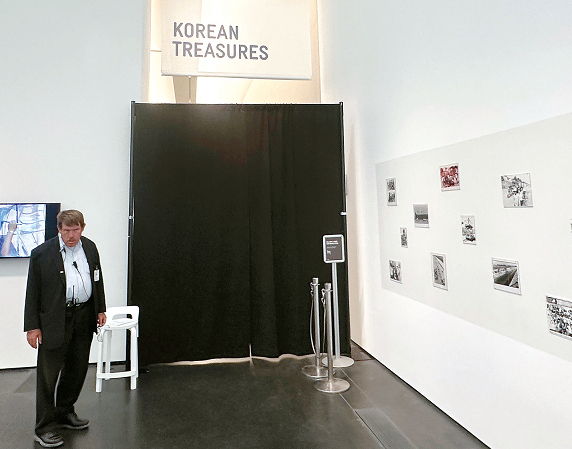The Korean art world has spoken out regarding allegations that some of the works in the “Korean Treasures” exhibition at the Los Angeles County Museum of Art (LACMA), which concluded in June, might be forgeries. Chester Chang, who donated the pieces, is now facing controversy over the origins of his collection.
The controversy arose when one collector claimed that Chang had taken the artworks during a transaction by intimidation. The seller alleged that Chang had even mentioned the possibility of the pieces being “stolen goods” or “forgeries” during the deal, but still went on to exhibit them at LACMA.

Dong-guk Lee, Director of the Gyeonggi Provincial Museum, shared his thoughts on the situation in response to LACMA denying the forgery allegations. Director Lee was among the experts who attended a special panel discussion organized by LACMA on June 26 to address the concerns.
Regarding LACMA’s assertion that scientific research had been conducted over several years, Director Lee commented, “Scientific analysis is just one part of the authentication process.” He further emphasized, “Even if scientific analysis determines the pieces are authentic, both connoisseurship and provenance—the detailed history of the artwork from the artist’s studio to the current owner—must align fully for a piece to be confirmed as genuine.”
Lee also criticized the overall quality of the exhibited works, describing them as “C-grade and D-grade pieces,” noting that despite the exhibition’s title, there were hardly any actual “treasures” on display.
While acknowledging LACMA’s ongoing research, Lee stressed that collaboration with Korean scholars is essential. “The Korean art community already holds a negative view of the Chester Chang collection,” he added.
When asked about LACMA’s decision not to publish a catalog for the controversial exhibition, Lee revealed that during the June symposium, LACMA Director Michael Govan had announced that plans for the catalog had been canceled. “Govan stated that they would release a catalog only after conducting further research,” Lee explained.

In the August edition of the art journal Art in Culture, Lee also criticized the exhibition’s curator, Stephen Little, who heads LACMA’s Chinese and East Asian Art Department. Lee argued that Little’s over-reliance on scientific testing, coupled with his disregard for the opinions of Korean experts, led to the forgery controversy.
Even if scientific analysis suggests the authenticity of the works, Lee stated, it is merely a necessary condition but not a sufficient one. He pointed to Three Women and a Child by Park Soo-keun as an example, noting that while scientific testing might indicate it is genuine, the positioning and appearance of the figures in the painting do not align with the title or Park’s other well-known works. This discrepancy was highlighted by curator Hyun-sun Tae (Leeum Museum) and Professor Sun-pyo Hong (Ewha Womans University).
Lee further criticized the inclusion of two ornamental stones and Qing dynasty inkstones in the exhibition, noting that these items have no relation to Korean treasures. He expressed disbelief that Stephen Little, a specialist in Chinese art, would not have recognized this.
Lee concluded by stating that the use of the term “treasures” for the exhibition reflects a “lack of understanding and appreciation” for the true value of Korean art. He argued that this controversy reveals that institutions like LACMA, and the broader Western art world, still fail to properly recognize the significance of Korean art. “This is an opportunity for Korea to accurately present the essence of its art to the West and to reconsider how it introduces Korean art to the world,” he said.
BY KYEONGJUN KIM [kim.kyeongjun1@koreadaily.com]





